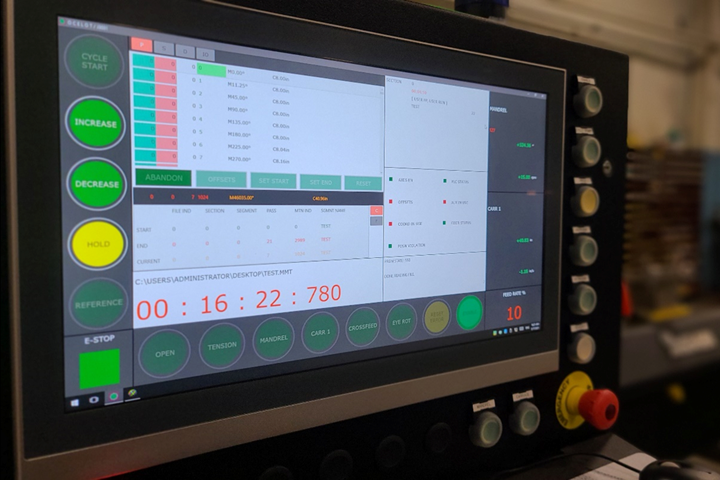CAMX 2022 exhibit preview: McClean Anderson
Ocelot, backed by more than 60 years of machine control systems, is McClean Anderson’s latest filament winding machine featuring the latest hardware and software technologies.
Since 1961, McClean Anderson (Schofield, Wis., U.S.) has developed filament winding equipment. Since its first computer-controlled filament winding machine pioneered in 1976, the N101, the company says it has released increasingly efficient equipment for improved winding accuracy and production speeds. Ocelot is McClean Anderson’s latest machine control, demonstrated at CAMX alongside Simwind, its next-generation fiber pattern development software to design and model complex filament-wound structures. Built from the ground up, Ocelet features the latest and hardware and software technologies, according to the company.
Ocelot includes all features provided within the Flexwind control while providing additional advantages. It features a high-performance ultra-compact control cabinet industrial PC with Windows 10 OS – green and sustainable IT, 17-inch high-definition touch display and etherCAT-based communication with unlimited input and output possibilities. It offers Advanced Safety Logic technology and Rapid Custom Automation. Ocelot is also able to execute Composite Designer/SimWind2 motion and auxiliary profiles (*.MMT, *.CHN, *.BUF, *.AUX, *.TEN files), has tools for troubleshooting and system diagnostics and features Open Platform Communication and integration with external industrial hardware and software. Moreover, tensioner integration is possible without the need for a separate PLC and an encrypted code is applied to user interface and PLC.
The company highlights a few of its innovations leading up to Ocelot. In 1985, for example, McClean Anderson introduced its Compositrak filament winding machine control system, which helped solidify its position in the industry. The Compositrak enabled production of complex, non-linear wound parts and incorporated full sixe axes of controlled motion. McClean Anderson adds that this new control platform enabled the use of offline programming software that embraced a new technology — the IBM-PC.
In 1996, McClean Anderson introduced the Omniwind filament winding machine control system. The Omniwind control was engineered to leverage the latest advances in DSP and PC-based motion control technology and enabled users to realize accurate high-speed production and advanced R&D winding.
And in 2005, McClean Anderson released Flexwind, a next-generation machine control system. The Flexwind machine control was designed and engineered using extensive input from customers around the world. It was designed for smoother operation, ease of use, recovery and serviceability. The Flexwind control includes all the benefits of the Omniwind control while adding new features making it easier to use, more stable and flexible to the needs of each company.
Related Content
-
Highly tunable, woven lattice reinforcements target automotive structures
CAMX 2023: Startup Weav3D will be demonstrating its two collaborative automotive demonstrator parts and present two conference papers.
-
Composite lamination equipment, laminator belts
CAMX 2023: Schott & Meissner, Kastilo and Held Technologie join Allertex of America in featuring double belt presses, high-quality laminator belts and more.
-
CAMX 2022 exhibit preview compilation, Part 1
CompositesWorld presents some of the 120 exhibitor previews received highlighting key technologies, services and trends at this year’s CAMX.

















